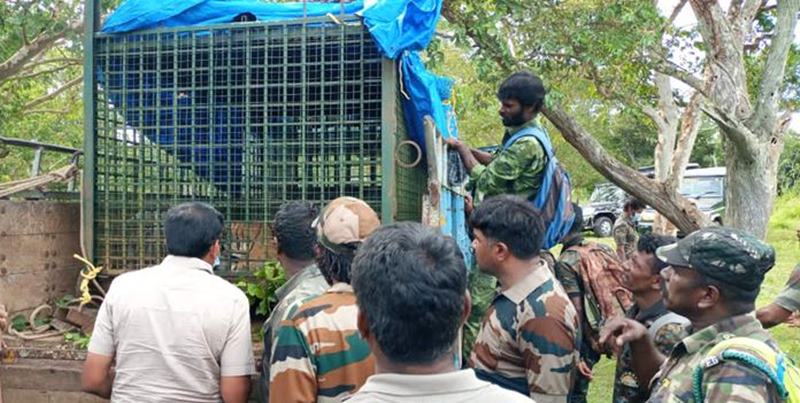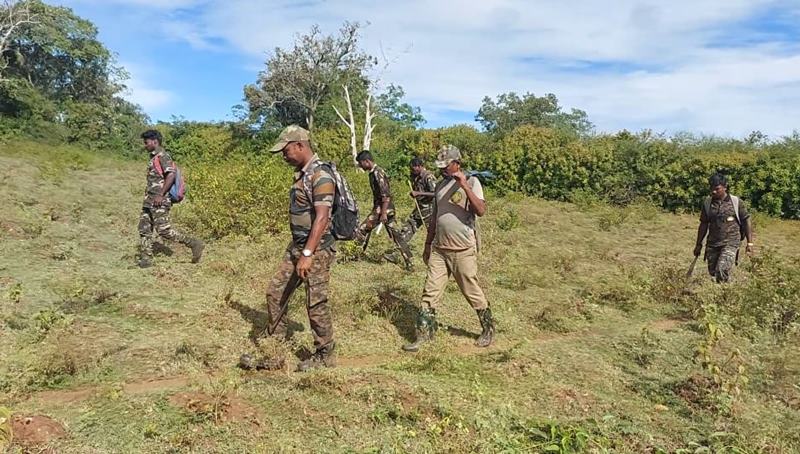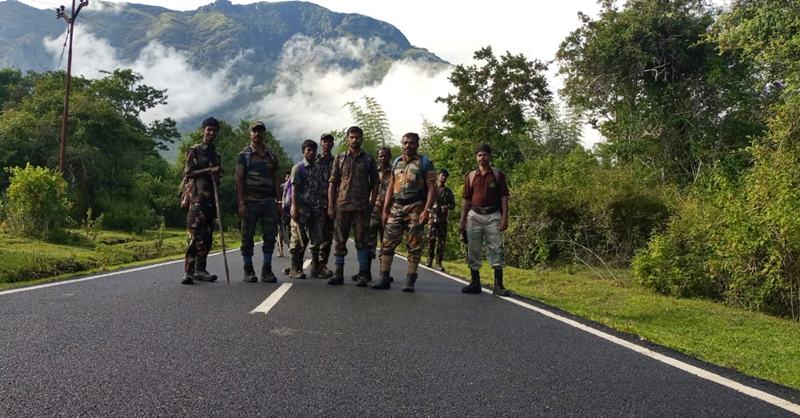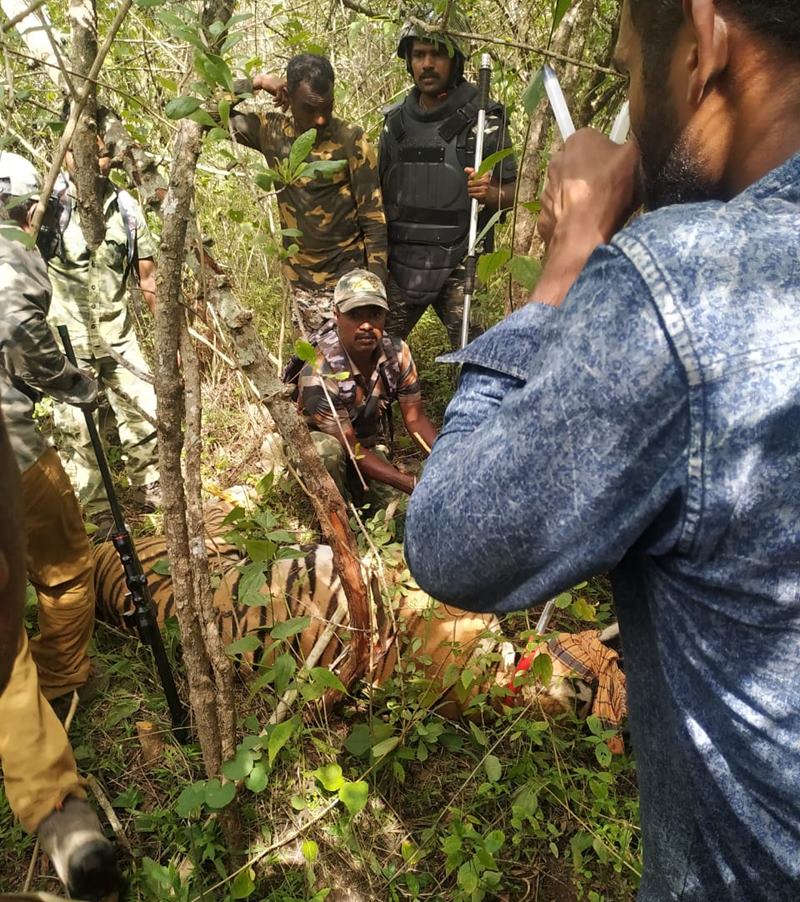Tiger T-23 and its tale
In an action-packed month, the Tamil Nadu forest department and a team of its forest rangers, doctors and anti-poaching watchers tracked tiger T-23, believed to have killed four people. He dodged them at every turn before being captured in the Mudhumalai forests, 21 days after the chase began.


Constant information and updates from the local village communities who sighted the animal were crucial to the operation.
On October 15, a three-week long nail-biting thriller concluded, when tiger T-23 was tranquilised and taken captive deep in the Mudhumalai forest range of Tamil Nadu, about 550 kilometres (kms) away from the state capital Chennai.
The 13-year-old tiger (T-23), which had killed several cattle and believed to have caused the death of four people, the last one just a day before he was captured, was tranquilised about 1.5 kms away from the Masinagudi checkpost, and about 29 kms from the hill station of Ooty.
“It took eight of us to lift the 200-kg tiger and load him onto the vehicle that carried him away to Mysore,” Institute Bomman (he worked at a field station of Indian Institute of Science in the Nilgiris and hence the name), who had been shadowing the tiger since September 24, along with nearly 30 other anti-poaching watchers (APW), told Gaon Connection.

Thirty-eight-year-old Bomman belongs to the Betta Kurumba tribal community, and has been an Anti-poaching watcher (APW) with the forest department of Tamil Nadu for 12 years.
“My father worked in the forests and my grandfather was a mahout,” Bomman, who has grown up in and around forests in the area, told Gaon Connection. “I dropped out of school in the eighth, but I know all the botanical names of the flora and fauna in these parts,” he smiled.
Supriya Sahu, principal secretary to the Government of Tamil Nadu, department of environment, climate change and forests, described the APWs as the forest department’s eyes and ears. “Drawn mostly from the tribal communities, no one knows the forests as well as they do. And, they are present in all forest operations in Tamil Nadu,” she told Gaon Connection.
There are 264 tigers in the five tiger reserves of Tamil Nadu. Mudhumalai alone, where T-23 was captured, has 109 tigers in its forests. Besides this, there are four elephant reserves in the state with nearly 3,000 wild elephants.

Teamwork, technology and a thrilling finale
“A team of four doctors – Rajesh, Kalaivanan, Sukumar and Prakash – were on the alert with the darts to tranquillise the animal. The anti-poaching watchers (APWs), forest rangers, doctors all worked tirelessly to successfully capture the tiger alive,” Shekhar Kumar Niraj, chief wildlife warden, Tamil Nadu, told Gaon Connection. Niraj was there, along with the APWs, forest rangers and doctors, directing the tiger operations. T-23 was tranquilised finally, after it had given the team that was tracking it the slip for 21 days.
The tiger operation was long drawn out, involved a lot of hard work by everyone and, according to the chief wildlife warden, very complex.
“We used drones, camera traps and, of course, the expertise of the people in the team,” Niraj said. Pug marks and spoor had to be studied, records from the camera traps had to be analysed, clues and cues had to be picked up from the other animal calls that gave the team some indication of the movement of the tiger.
Constant information and updates from the local village communities who sighted the animal were crucial to the operation, he said. “The APWs were at the forefront of the operation. They are like the foot soldiers in the army,” Niraj added.

Madhan, another APW from the Betta Kurumba tribal community from Theppakadu village in Mudumalai, was also one of the team who participated in the thrilling finale to the operation. “The tiger was playing a formidable mind game with us,” the 29-year-old told Gaon Connection. “I grew up around Mudhumalai like a lot of the other APWs,” he said. He joined as an APW ten years ago at the age of 19.
Also Read: Taking Trash to Task: A dumpyard in the Nilgiris hills transforms into a waste management park
“We spread out in teams of five or six each and were in constant touch. But the tiger repeatedly gave us the slip,” Madhan recounted. Even after the doctors shot the first dart of tranquilliser, the tiger disappeared into the bush and we did not know where he was,” he said.
The team tried spotting the big cat from the machan that had been put up in several places in the area, but it was useless. Finally, it was technology in the form of a drone that gave them the final leg up, and they located the tiger, enabling the doctors to get close enough to administer the second tranquilliser.
Also Read:Heera and Panna, the inseparable tiger siblings of Panna Tiger Reserve, part ways
“We waited till the tiger was inert, ensured he was out, and then blind folded him, trussed up his legs and with the help of a net put him into a cage in the truck,” Madhan said. T-23 was then driven off to the Chamundi Animal Rescue and Rehabilitation Centre at Koorgalli, Karnataka, about 100 kilometres away.

“The tiger had several wounds, some infected with maggots. He was also missing some teeth. It was obvious he had got into fights with other tigers over territory. But, we heard he is responding to treatment and recovering well now,” Madhan said.
Unsung heroes
According to Sahu, there are 110 APWs in Tamil Nadu and they are paid Rs 12,500 each on a monthly basis. “Without them any operation in the forest would be almost impossible,” she emphasised.
“Tracking tigers, elephants, keeping a watchout for poachers, spotting forest fires… they are the unsung heroes of the forests,” she reiterated.
As per the Government of Tamil Nadu Forest Department website, the cover of the state is 26,364 square kilometres (sq km) which is 23.27 per cent of the state’s total geographical area.

The chief wildlife warden Niraj was quietly pleased at the successful completion of the operation. “But, more than celebration, it is a time for reflection for the forest department,” he said. “We must learn from the lessons of this operation. It has revealed to us that there is a lot of scope for improvement and. We must apply scientific techniques to better conserve forests and its resources,” he concluded.
Also Read: Even tigers get lonely, like RBT38 did, and head back to Ranthambore

